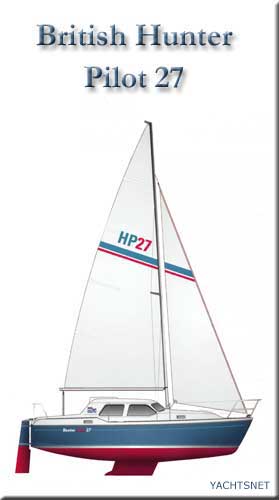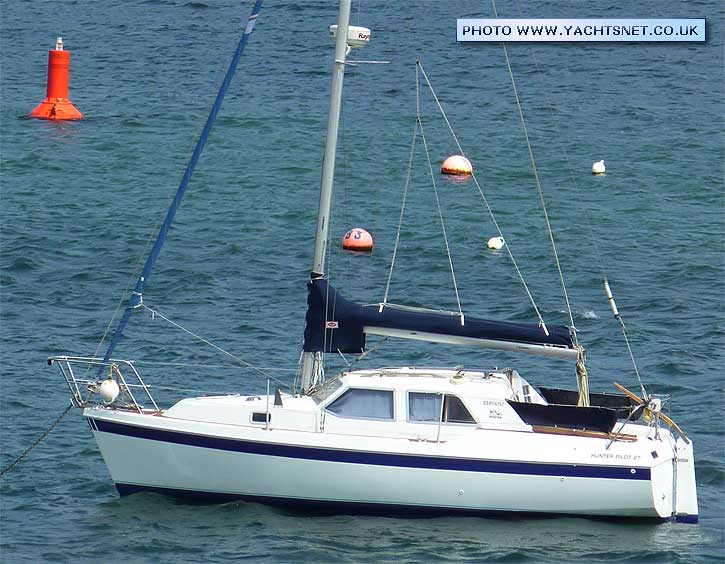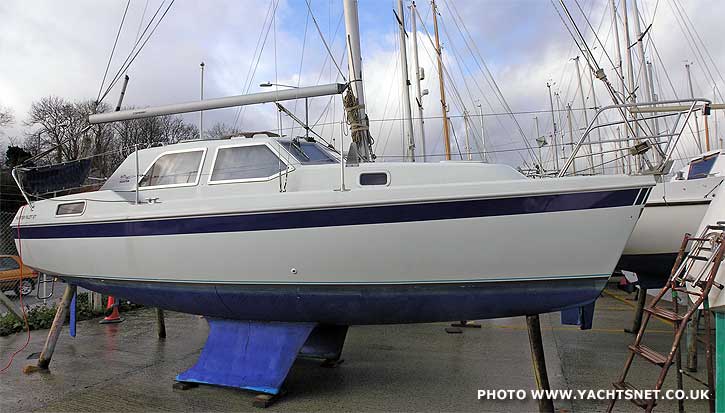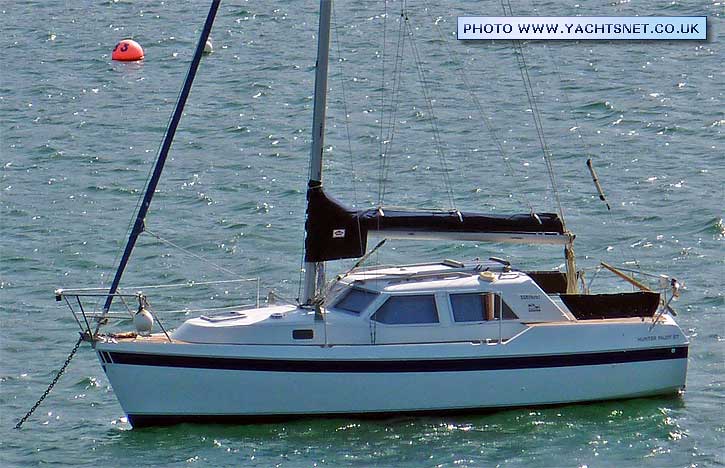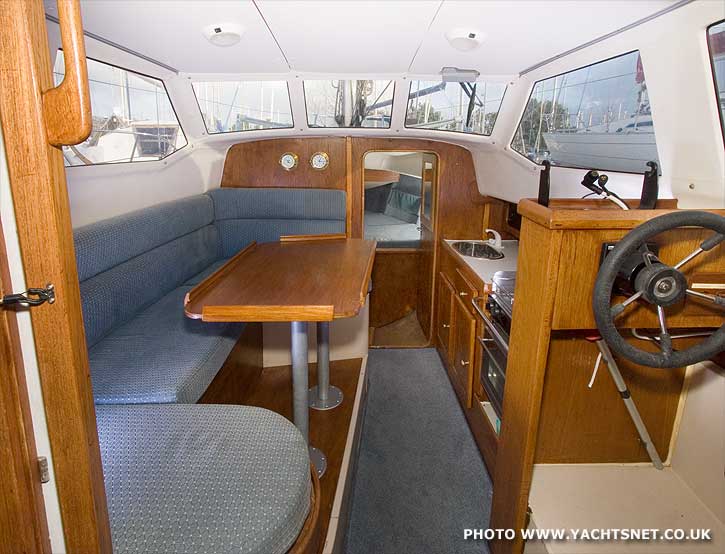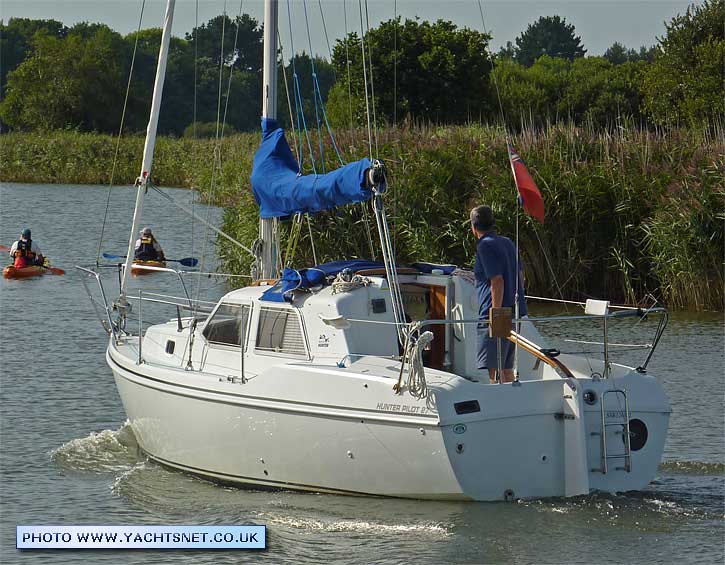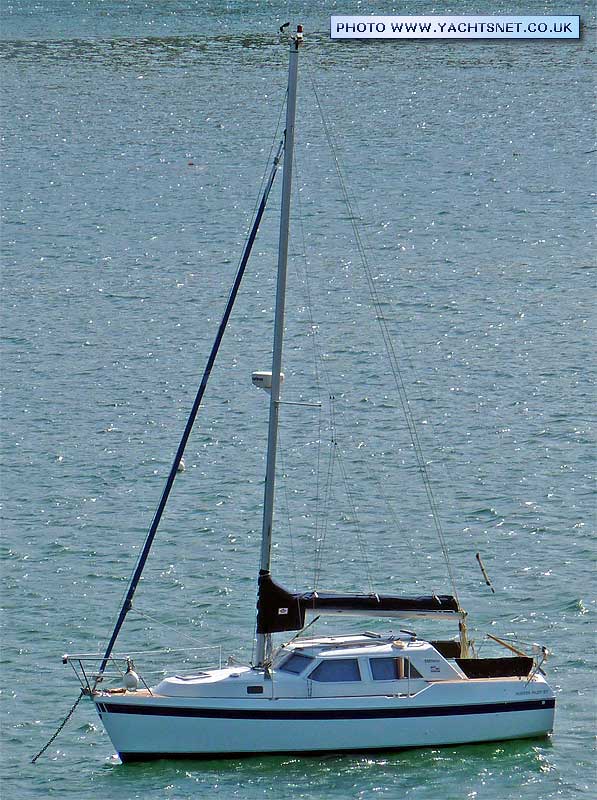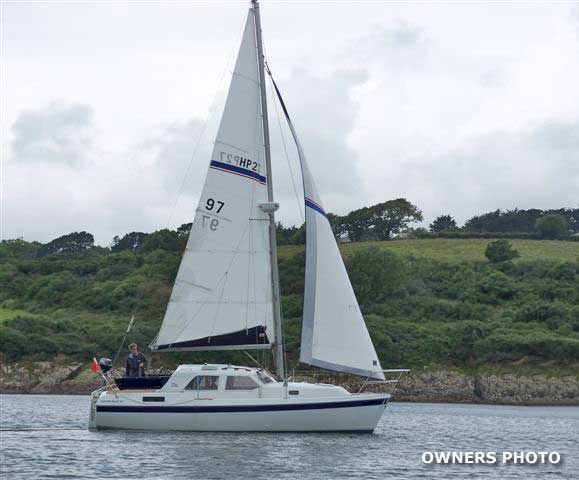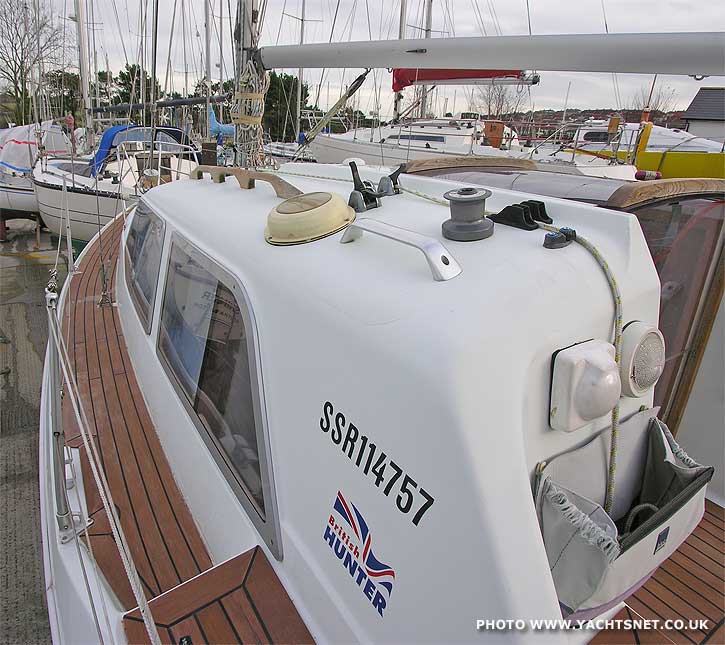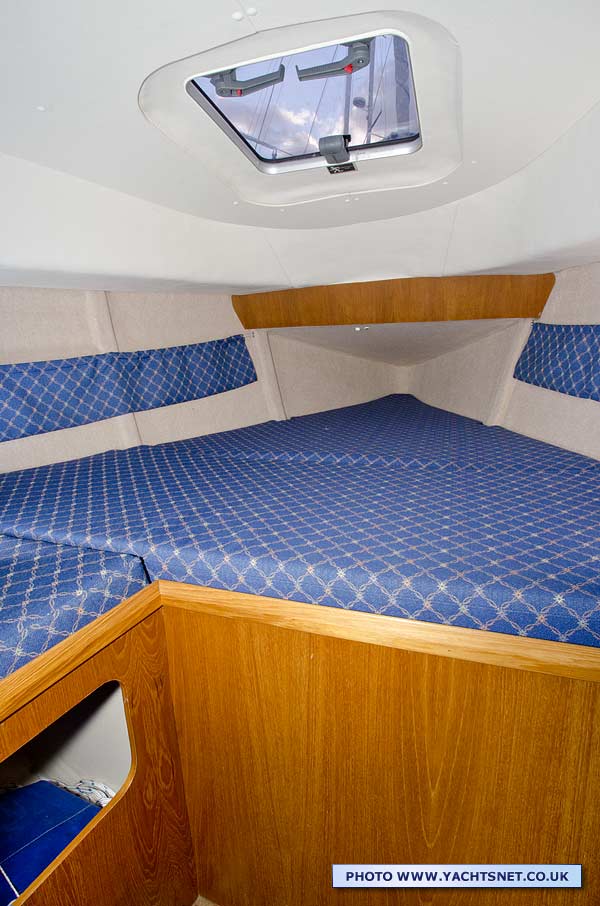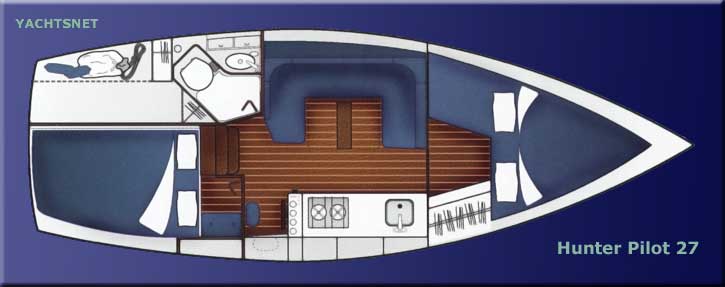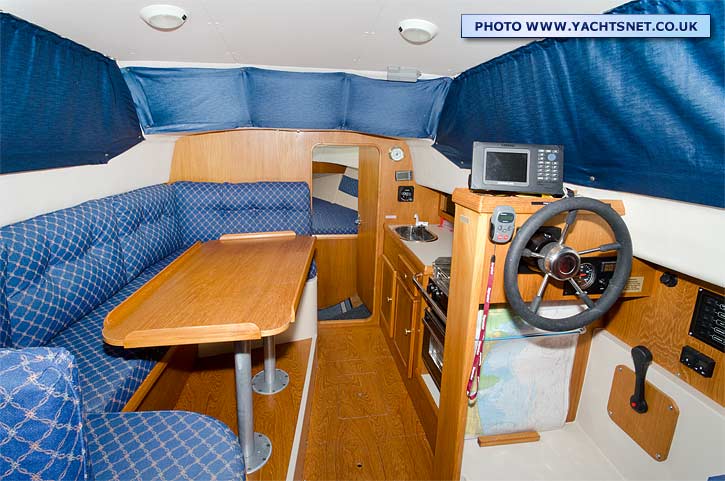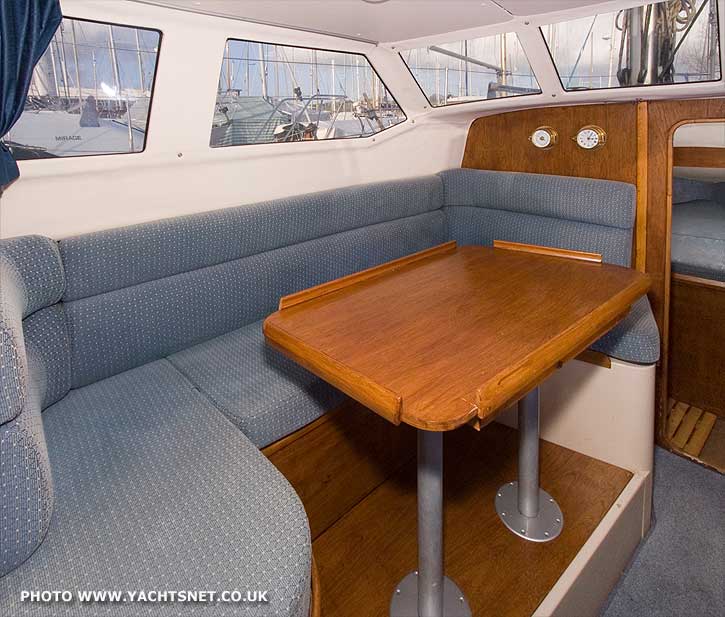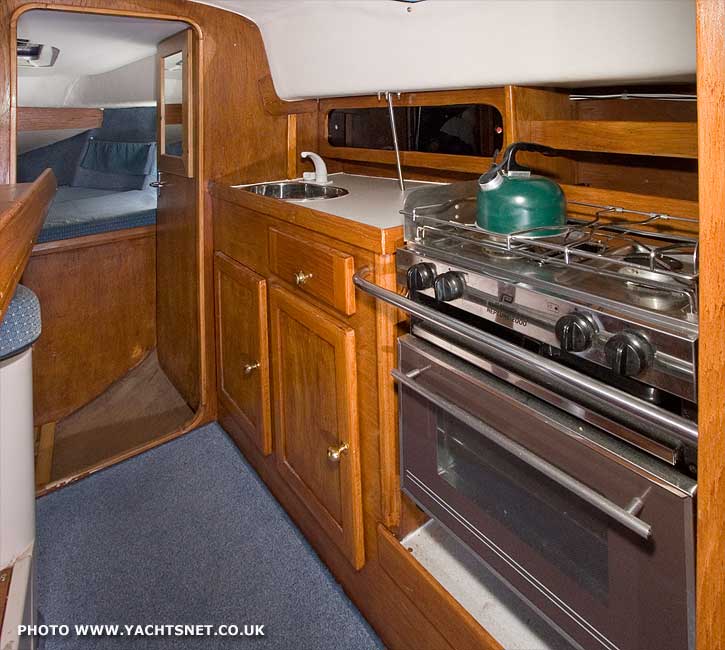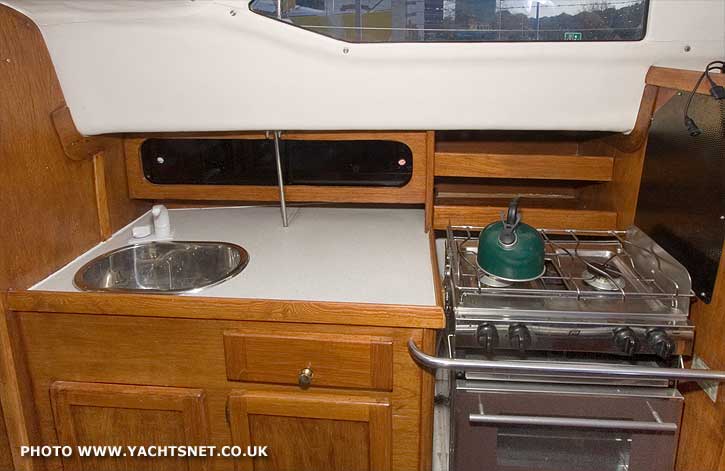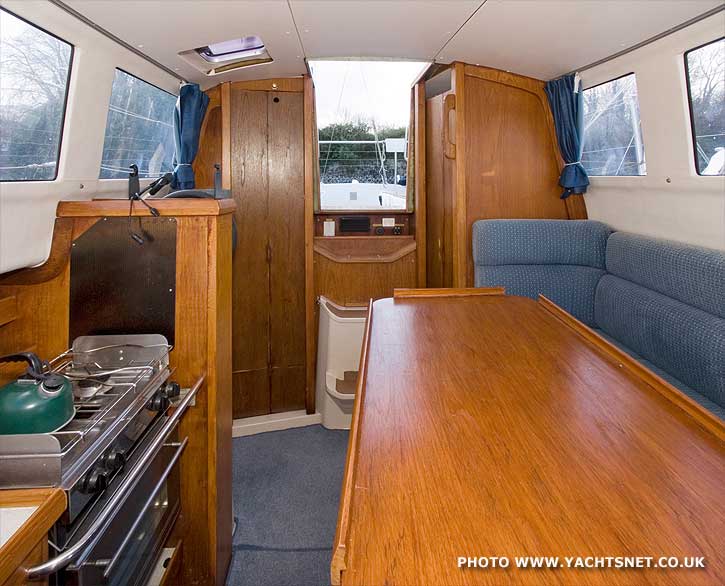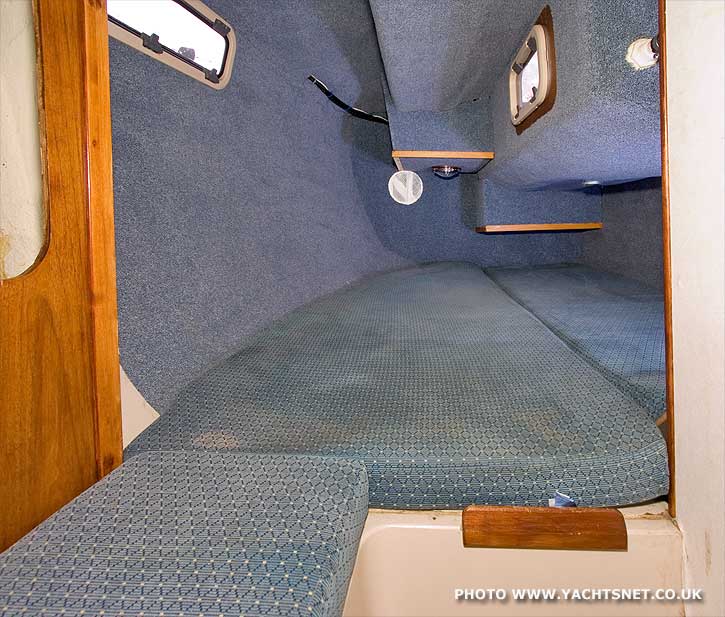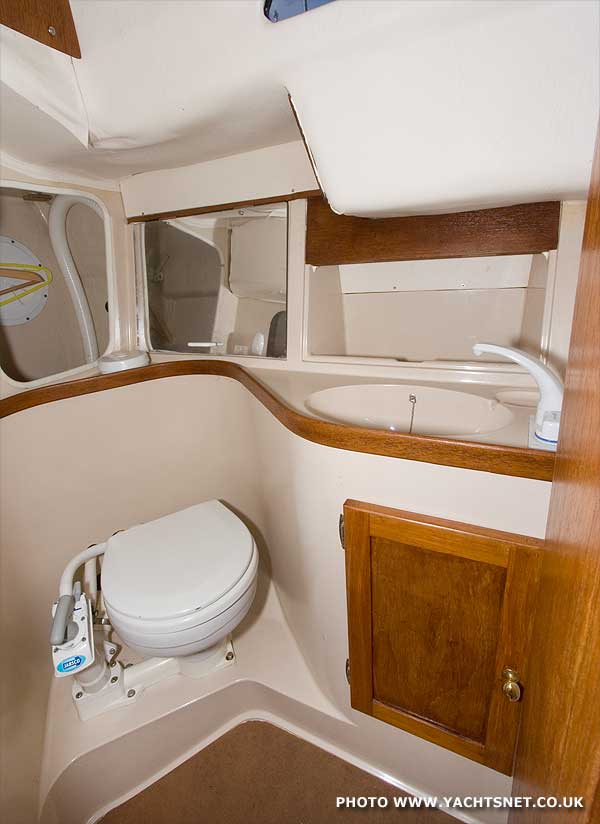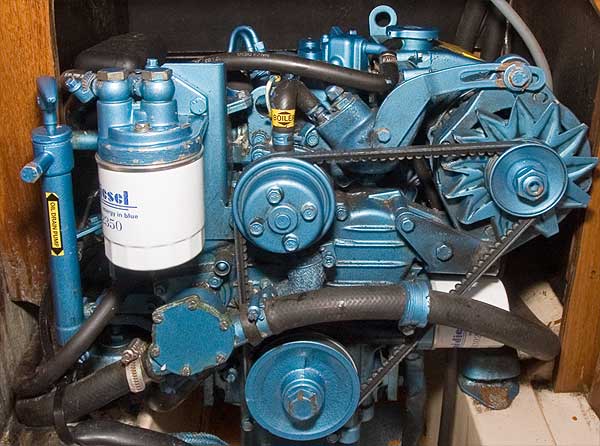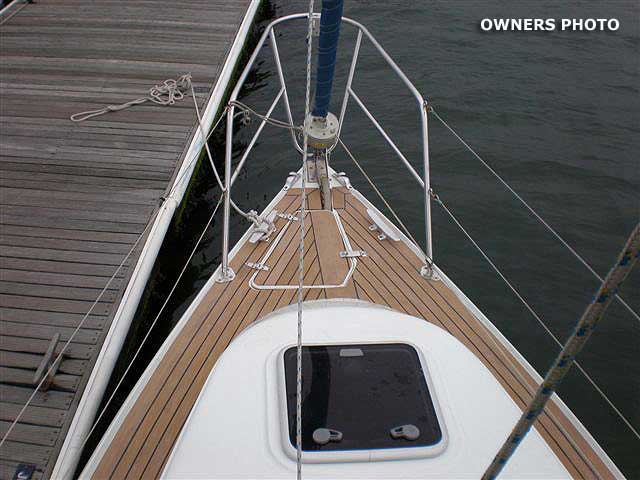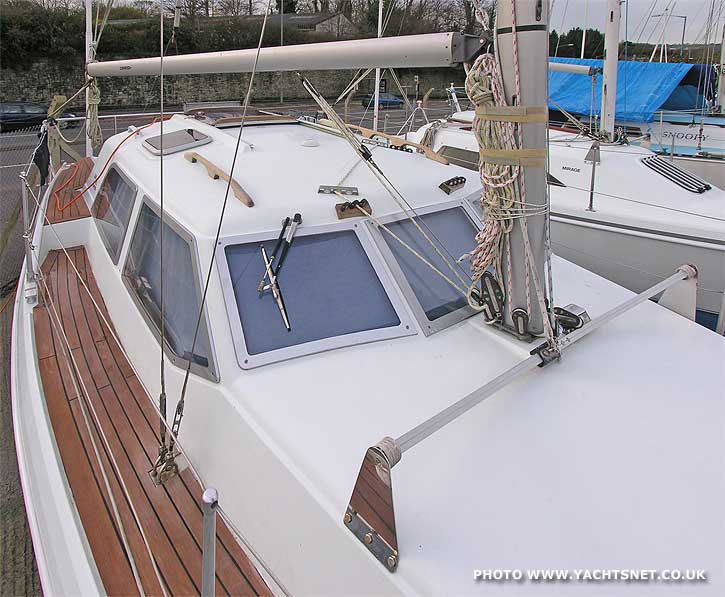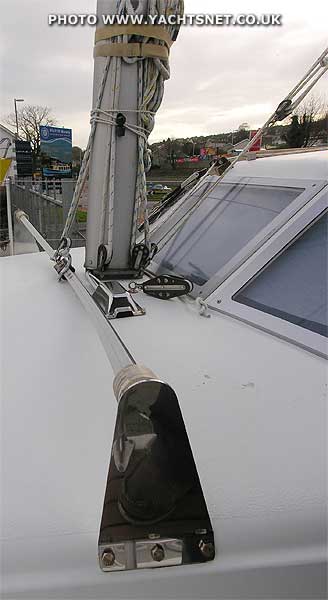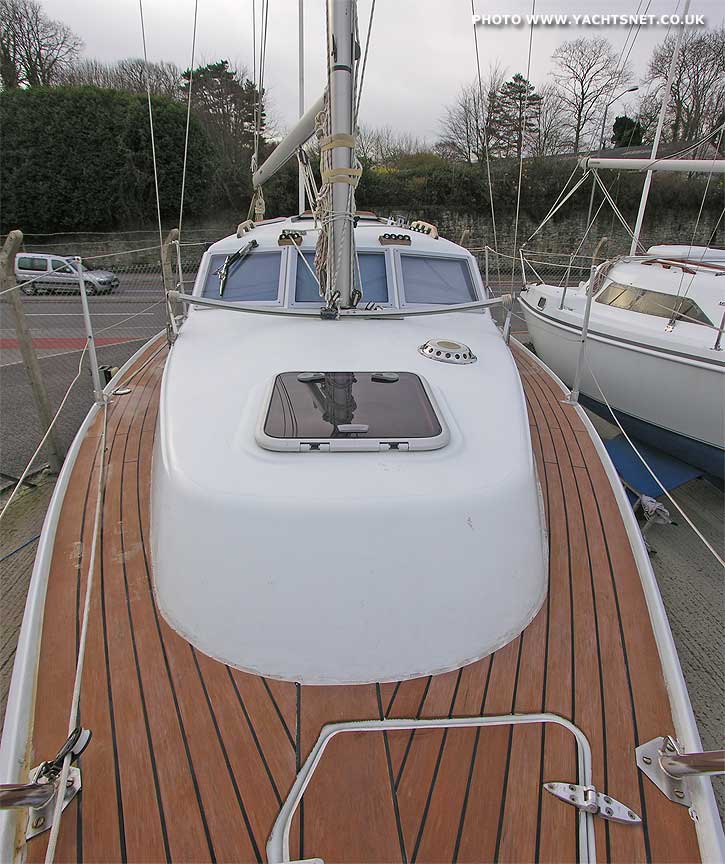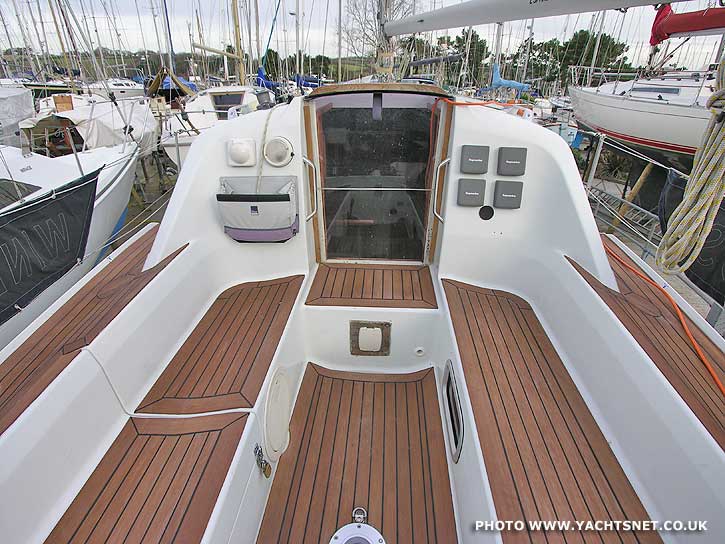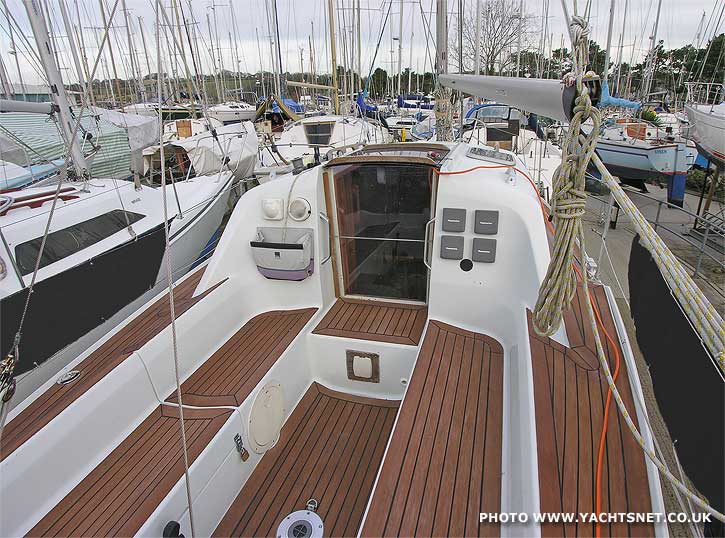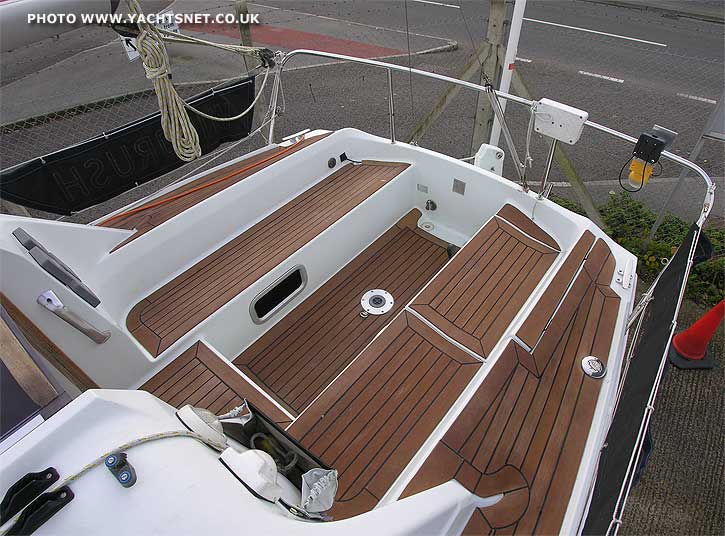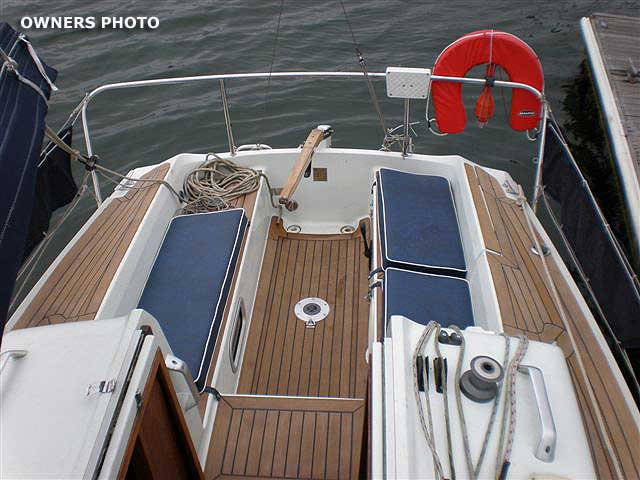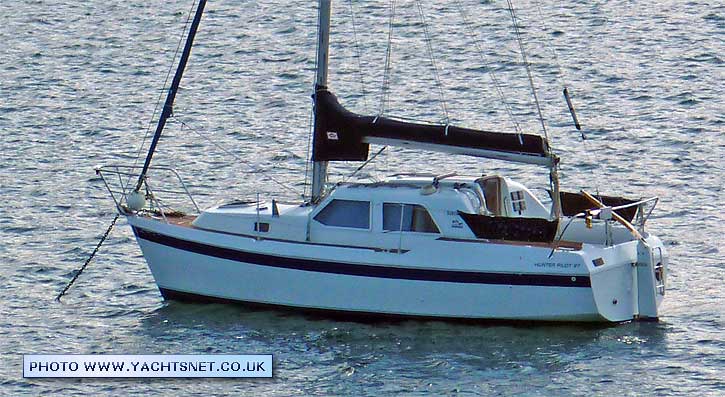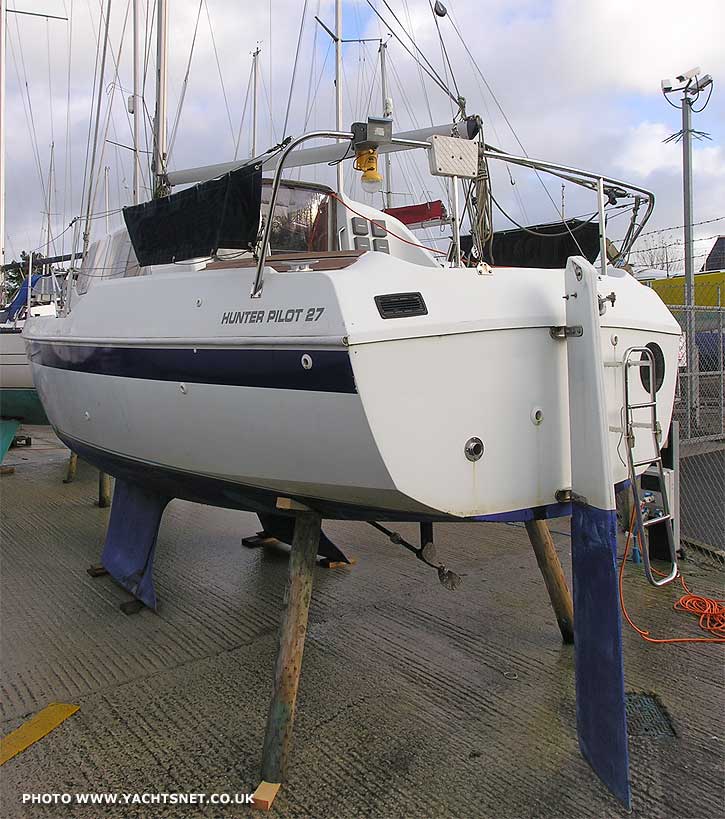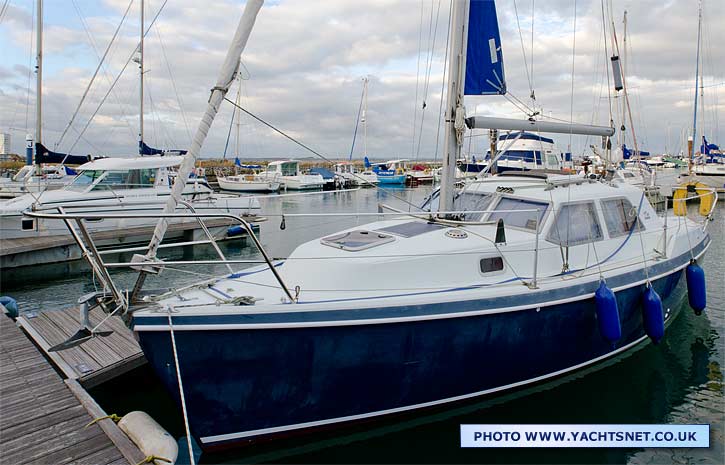| |
|
|
|
|
|
|
|
|
| © Yachtsnet Ltd. 2000/2025 |
|
|
|
| |
|
|
Yachtsnet's
archive of boat details and pictures
|
| |
The following information and photographs are
displayed as a service to anyone researching yacht types. HOWEVER THE PHOTOGRAPHS AND TEXT ARE COVERED BY COPYRIGHT, AND MAY NOT BE REPRODUCED WITHOUT THE PERMISSION OF YACHTSNET LTD. Details and photographs
are normally based on one specific yacht, but could be a compilation.
No reliance should be placed on other yachts of the same class being
identical. Where common variations exist, we have endeavoured
to indicate this in these archive details. |
Hunter Pilot 27 |
Brief details
|
Builder |
British Hunter, Rochford, Essex |
The Hunter Pilot
27 is one of the smallest true deck saloon sailing yachts, and thanks to Hunter's efficient 'twin fin' bulbed bilge
keels even the bilge-keel version performs well. The Pilot 27 offers a great deal of accommodation and comfort
in a small, cheap to moor, package. |
LOA |
26' 10" |
Sail area |
290 sq ft |
LWL |
22' 6" |
Rig |
fractional sloop |
Beam |
9' 2" |
Cabins |
Forecabin, saloon & aft cabin |
Draught |
3' 5" |
Berths |
5 |
Displacement |
6,051 lbs |
Engine |
Nanni 2.5 HE diesel |
Ballast |
2,365 lbs |
BHP |
14 |
Keel type |
Twin iron bulbed bilge keels and transom-hung rudder |
|
|
The Hunter Pilot 27 was designed by David
Thomas for British Hunter. Although both fin-keel and twin
keel versions of both were built, the twin-keel versions were
more popular.
Hunter resolutely refused to call these boats bilge-keelers,
preferring the term 'twin fin' to emphasise the performance.
The two keels are asymmetric, and angled, to provide lift
when heeled. In practice, there is little performance difference
in most conditions between fin and bilge-keeled British Hunters.
The Hunter Pilot 27 was built from 1996 to 2005, with around
100 in total produced. The hull design appears to be the same
as the Hunter Channel 27, a cruiser without deckhouse, produced
from 1999 onwards.
British Hunter have always offered their boats both as complete
boats and in kit form, though as all structural work was always
done in the factory there are rarely major differences between
factory-completed and kit boats.
|
|
|
|
